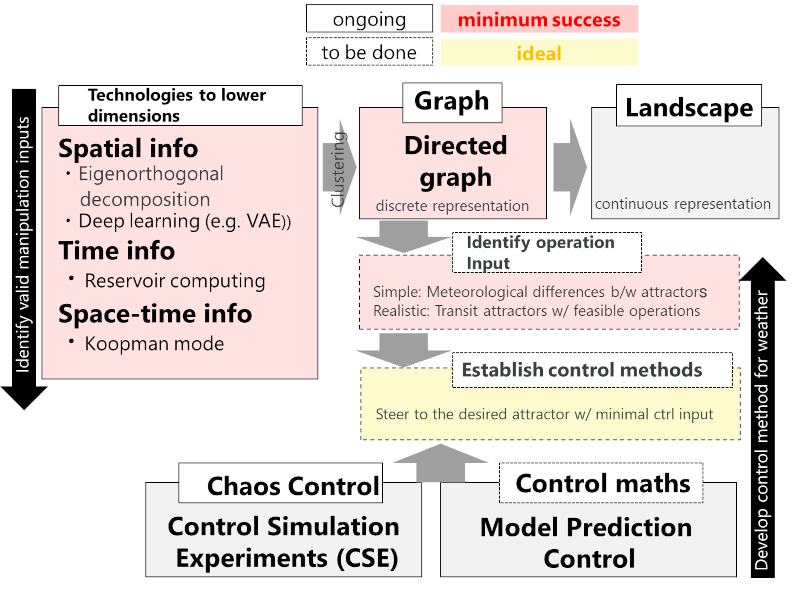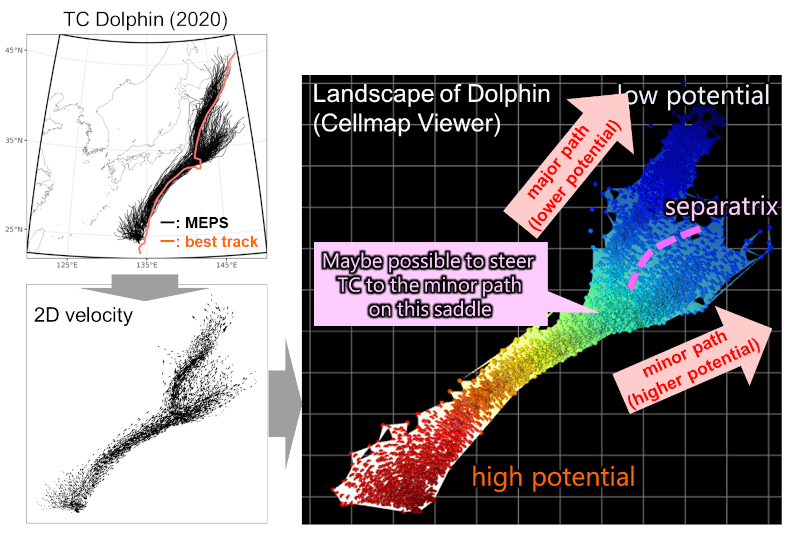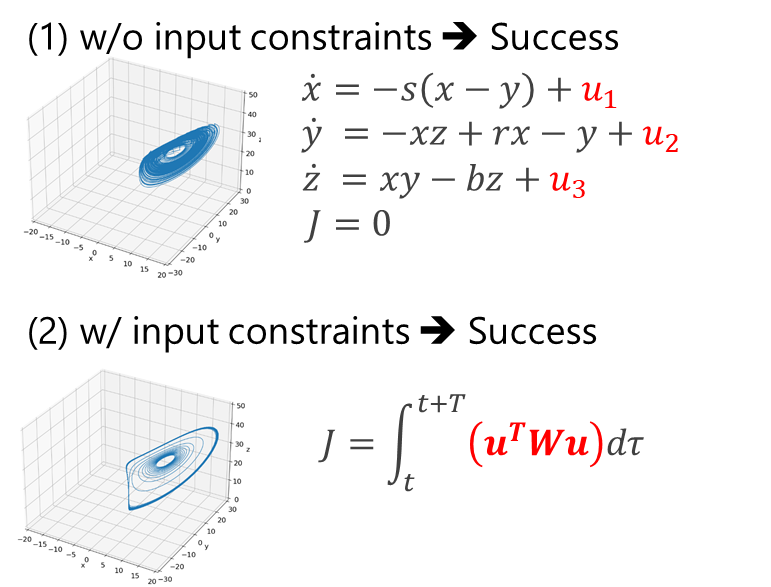Progress Report
Quantifying Weather Controllability and Mitigatable Flood Damage Based on Ensemble Weather Forecast1. Mathematical Research Team: Quantifying Weather Controllability
Progress until FY2022
1. Outline of the project
The research team focuses on detecting "separatrix" in extreme weather phenomena, i.e., a point where two modes of behavior separate. At this specific point, we could steer to the desired direction with a small manipulation. However, the search for separatrix in very large-dimensional meteorological data is technically difficult. We use several compression methods, such as deep learning, to reduce the dimensions of the data and to quantify the weather controllability. Landscape analysis is also used to identify separatrix and saddle points where effective intervention is possible. However, even for phenomena with an identified separatrix, we still struggle to steer to a desired direction without an efficient manipulation. Consequently, we are attempting to create an efficient process control utilizing a technique known as Model Predictive Control (MPC).

2. Outcome so far
Principal investigators in mathematics and informatics applied their knowledges to weather and earth sciences, with three main interests (Fig. 1).
[Reduction of data dimensions]
It consists of the application of dimensionality reduction techniques, to handle large-dimensional data, that are generated by weather simulations and are a bottleneck in 1) analyzing data in an efficient way, 2) controlling extreme weather.
[Landscape analysis]
We designed a "directed graph" by grouping data using a "clustering" technique. A "Hodge decomposition" then helps to extract the "potential" and to develop an algorithm able to identify separatrix and control points. As a study case, we applied the analysis to typhoon Dolphin, which occurred in September 2020, Visualizing the landscape of typhoon Dolphin (Fig. 2), we successfully confirmed the existence of a separatrix, suggesting the location of the saddle where efficient intervention is possible.

[Development of control method with MPC]
Control Simulation Experiment (CSE), a technique to steer to a desired regime, is used for chaos dynamics control. However, traditional CSE requires many data samples to locate the appropriate disturbances. In this research, we have developed a technique that brings the system to the intended state with less data samples, by introducing MPC in the data assimilation process. According to a preliminary experiment, the Lorenz-63 model (simulating a chaotic system) can be guided to a chosen regime with fewer data samples and control inputs (Fig. 3).

3. Future plans
We will continue to improve our knowledge by:
- Documenting separatrix detection and weather controllability for more past disaster events,
- Utilizing the long-term large-scale ensemble weather forecasts for better dimensionality reduction techniques.
- Promoting the use of cutting-edge technologies, such as quantum annealing computers, to solve the remaining problems on MPC.